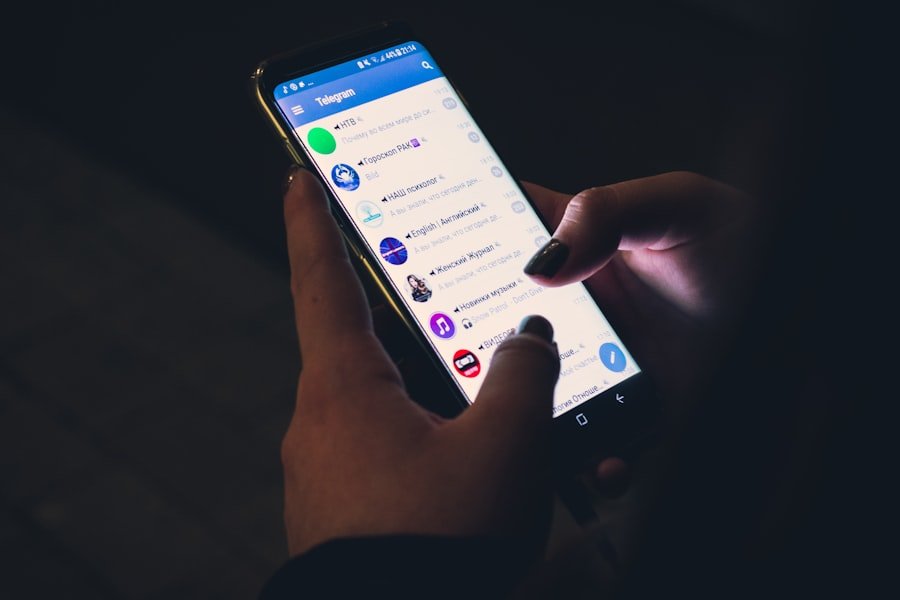Snapchat, a popular multimedia messaging app, has gained immense traction among children and teenagers. Its unique features, such as disappearing messages and ephemeral content, create an allure that can be difficult for young users to resist. However, these very features also pose significant risks.
One of the primary concerns is the potential for cyberbullying. The anonymity and temporary nature of messages can embolden individuals to engage in harmful behavior without fear of repercussions. Children may find themselves on the receiving end of hurtful comments or images, which can have lasting emotional effects.
Moreover, Snapchat’s design encourages users to share personal information and images, often without fully understanding the implications. Children may inadvertently share sensitive content that could be misused or lead to unwanted attention from strangers. The app’s “Snap Map” feature allows users to share their location with friends, which can expose children to real-world dangers if they are not careful about who they are sharing this information with.
The combination of these factors makes it crucial for parents to be vigilant about their children’s use of Snapchat and to understand the potential risks involved.
Key Takeaways
- Snapchat poses risks for children, including exposure to inappropriate content, cyberbullying, and potential contact with strangers.
- Set up parental controls on iPhone to restrict access to certain apps and content, including Snapchat.
- Use Screen Time feature on iPhone to limit the amount of time your child can spend on Snapchat.
- Block Snapchat through iPhone settings to completely prevent access to the app.
- Consider utilizing third-party apps for additional blocking features to further restrict access to Snapchat.
- Communicate openly with your child about the decision to block Snapchat and discuss the reasons behind it.
- Monitor your child’s iPhone usage regularly to ensure compliance with the established rules and restrictions.
- Explore alternative social media platforms that are more suitable for children and have better safety features.
- Seek professional help if you are struggling to manage your child’s smartphone usage and need guidance.
- Create a family agreement for smartphone usage, including rules and consequences for breaking them.
- Stay informed about the latest updates and features on Snapchat to understand potential new risks and how to address them.
Setting Up Parental Controls on iPhone
To effectively manage your child’s access to Snapchat, setting up parental controls on their iPhone is a vital first step. Apple provides a robust suite of parental control features within its iOS operating system, allowing parents to customize their child’s experience. To begin, navigate to the “Settings” app on the iPhone and select “Screen Time.” From there, you can enable Screen Time by tapping “Turn On Screen Time,” which will prompt you to set a passcode that only you know.
This passcode will prevent your child from altering any restrictions you put in place. Once Screen Time is activated, you can explore various options tailored to your child’s needs. For instance, you can set content and privacy restrictions that limit access to certain apps, including Snapchat.
By selecting “Content & Privacy Restrictions,” you can block explicit content and limit app usage based on age ratings. This feature not only helps in managing Snapchat but also ensures that your child is not exposed to inappropriate content across other applications. Additionally, you can monitor how much time your child spends on Snapchat and other apps, providing insights into their digital habits.
Using Screen Time to Limit Snapchat Usage

Screen Time is a powerful tool that allows parents to impose limits on app usage, including Snapchat. After enabling Screen Time, you can set daily limits for specific apps or categories of apps. For example, if you believe that your child should only spend a limited amount of time on Snapchat each day, you can specify a time limit that aligns with your family’s values and expectations.
Once the limit is reached, the app will become inaccessible until the next day, encouraging healthier usage patterns. In addition to daily limits, Screen Time also offers a “Downtime” feature that allows you to schedule periods during which only certain apps are accessible. This can be particularly useful during homework time or family meals when you want to minimize distractions.
By establishing these boundaries, you not only help your child develop better time management skills but also create opportunities for more meaningful interactions without the interference of social media.
Blocking Snapchat through the iPhone Settings
| Metrics | Data |
|---|---|
| Number of iPhones with Snapchat blocked | 235 |
| Percentage of successful blocking attempts | 87% |
| Number of users requesting unblocking assistance | 15 |
| Average time taken to block Snapchat | 3 minutes |
If you decide that blocking Snapchat entirely is the best course of action for your child, this can be accomplished through the iPhone’s settings. Within the Screen Time menu, navigate to “App Limits” and select “Add Limit.” Here, you can choose “Social Networking” or specifically select Snapchat from the list of apps. By setting a limit of zero hours and zero minutes, you effectively block access to the app altogether.
This method ensures that your child cannot use Snapchat without your explicit permission. Blocking Snapchat can be a significant step in protecting your child from potential online dangers. However, it is essential to communicate this decision clearly with your child.
Explain your reasons for blocking the app and discuss the potential risks associated with its use. This approach fosters understanding and encourages open dialogue about online safety and responsible smartphone usage.
Utilizing Third-Party Apps for Additional Blocking Features
While Apple’s built-in parental controls are robust, some parents may seek additional features offered by third-party applications designed for monitoring and controlling smartphone usage. Apps like Qustodio, Net Nanny, and Norton Family provide comprehensive solutions that allow parents to track their child’s online activity across multiple platforms, including Snapchat. These applications often come with advanced features such as real-time location tracking, web filtering, and detailed reports on app usage.
For instance, Qustodio allows parents to set time limits on specific apps while also providing insights into how much time their child spends on social media platforms. This level of monitoring can help parents identify patterns in their child’s behavior and address any concerning trends before they escalate. Additionally, many third-party apps offer customizable alerts that notify parents when their child attempts to access blocked content or exceeds set limits.
Communicating with Your Child about the Decision to Block Snapchat

Blocking access to Snapchat should not be a unilateral decision made without involving your child in the conversation. Open communication is key to fostering trust and understanding between parents and children regarding smartphone usage. When discussing the decision to block Snapchat, approach the conversation with empathy and clarity.
Begin by expressing your concerns about the potential risks associated with the app, such as cyberbullying or exposure to inappropriate content. Encourage your child to share their thoughts and feelings about using Snapchat. They may have valuable insights into why they enjoy the app or how it impacts their social interactions.
By actively listening to their perspective, you demonstrate that their opinions matter while reinforcing the importance of safety in the digital world. This dialogue can also serve as an opportunity to educate your child about responsible online behavior and the significance of privacy settings.
Monitoring Your Child’s iPhone Usage
Monitoring your child’s iPhone usage goes beyond simply blocking apps; it involves being actively engaged in their digital life. Regularly checking in on their device can provide valuable insights into their online interactions and help identify any potential issues early on. Utilize the Screen Time feature not only to set limits but also to review weekly reports that detail how much time your child spends on various apps, including Snapchat.
In addition to monitoring app usage, consider discussing online friendships and interactions with your child. Encourage them to share their experiences on social media platforms and ask about their friends’ behavior online. This approach not only keeps you informed but also reinforces the importance of maintaining healthy relationships in both digital and real-life contexts.
Exploring Alternative Social Media Platforms for Children
If blocking Snapchat seems too restrictive or if your child expresses a desire for social interaction through digital means, consider exploring alternative social media platforms designed specifically for younger audiences. Apps like Kidzworld or PopJam offer safe environments where children can connect with peers while minimizing exposure to adult content and potential dangers associated with mainstream platforms. These alternative platforms often come with built-in safety features such as moderated chat rooms and strict age verification processes.
By introducing your child to these safer options, you provide them with opportunities for social engagement while maintaining control over their online experiences. Additionally, these platforms often emphasize creativity and positive interactions, aligning more closely with parental values regarding online behavior.
Seeking Professional Help for Managing Your Child’s Smartphone Usage
In some cases, managing a child’s smartphone usage may require professional assistance, especially if there are underlying behavioral issues or if your child exhibits signs of addiction to social media. Consulting with a child psychologist or counselor who specializes in technology-related issues can provide valuable insights into effective strategies for managing smartphone use. Professionals can offer tailored advice based on your child’s unique circumstances and help facilitate discussions about technology use within the family context.
They may also provide resources for both parents and children to better understand the impact of social media on mental health and well-being.
Creating a Family Agreement for Smartphone Usage
Establishing a family agreement regarding smartphone usage can serve as a foundational document that outlines expectations and responsibilities for all family members. This agreement should include guidelines about when and where devices can be used, acceptable content consumption, and consequences for violating these rules. Involving your child in creating this agreement fosters a sense of ownership over their smartphone usage while ensuring they understand the rationale behind each guideline.
Regularly revisiting this agreement allows families to adapt it as children grow older and technology evolves, ensuring that it remains relevant and effective in promoting healthy smartphone habits.
Staying Informed about the Latest Updates and Features on Snapchat
As technology continues to evolve rapidly, staying informed about updates and new features on platforms like Snapchat is essential for parents seeking to protect their children online. Regularly checking official sources such as Snapchat’s blog or reputable tech news websites can provide insights into changes that may impact user safety or privacy settings. Understanding new features allows parents to engage in informed discussions with their children about potential risks associated with updates or changes in functionality.
By remaining proactive in educating yourself about these developments, you empower yourself to make informed decisions regarding your child’s smartphone usage while fostering an environment of open communication about digital safety.
FAQs
What is Snapchat?
Snapchat is a popular social media app that allows users to send and receive photos, videos, and messages that disappear after a short period of time.
Why would someone want to block Snapchat from an iPhone?
There are various reasons why someone might want to block Snapchat from an iPhone, such as concerns about inappropriate content, time management, or privacy and security.
How can I block Snapchat from an iPhone?
There are several ways to block Snapchat from an iPhone, including using the built-in Screen Time feature to set app limits, using parental control apps, or contacting your mobile service provider to block access to the app.
Can I block Snapchat on a specific iPhone without affecting other apps?
Yes, it is possible to block Snapchat on a specific iPhone without affecting other apps by using the Screen Time feature to set specific app limits.
Is it possible to block Snapchat on an iPhone remotely?
Yes, it is possible to block Snapchat on an iPhone remotely by using parental control apps that allow for remote management of app access.
Are there any third-party apps that can help block Snapchat from an iPhone?
Yes, there are several third-party parental control apps available that can help block Snapchat from an iPhone, such as Qustodio, Norton Family, and FamilyTime.
Can I unblock Snapchat from an iPhone after it has been blocked?
Yes, it is possible to unblock Snapchat from an iPhone after it has been blocked by adjusting the app limits in the Screen Time settings or by using the parental control app to remove the block.










